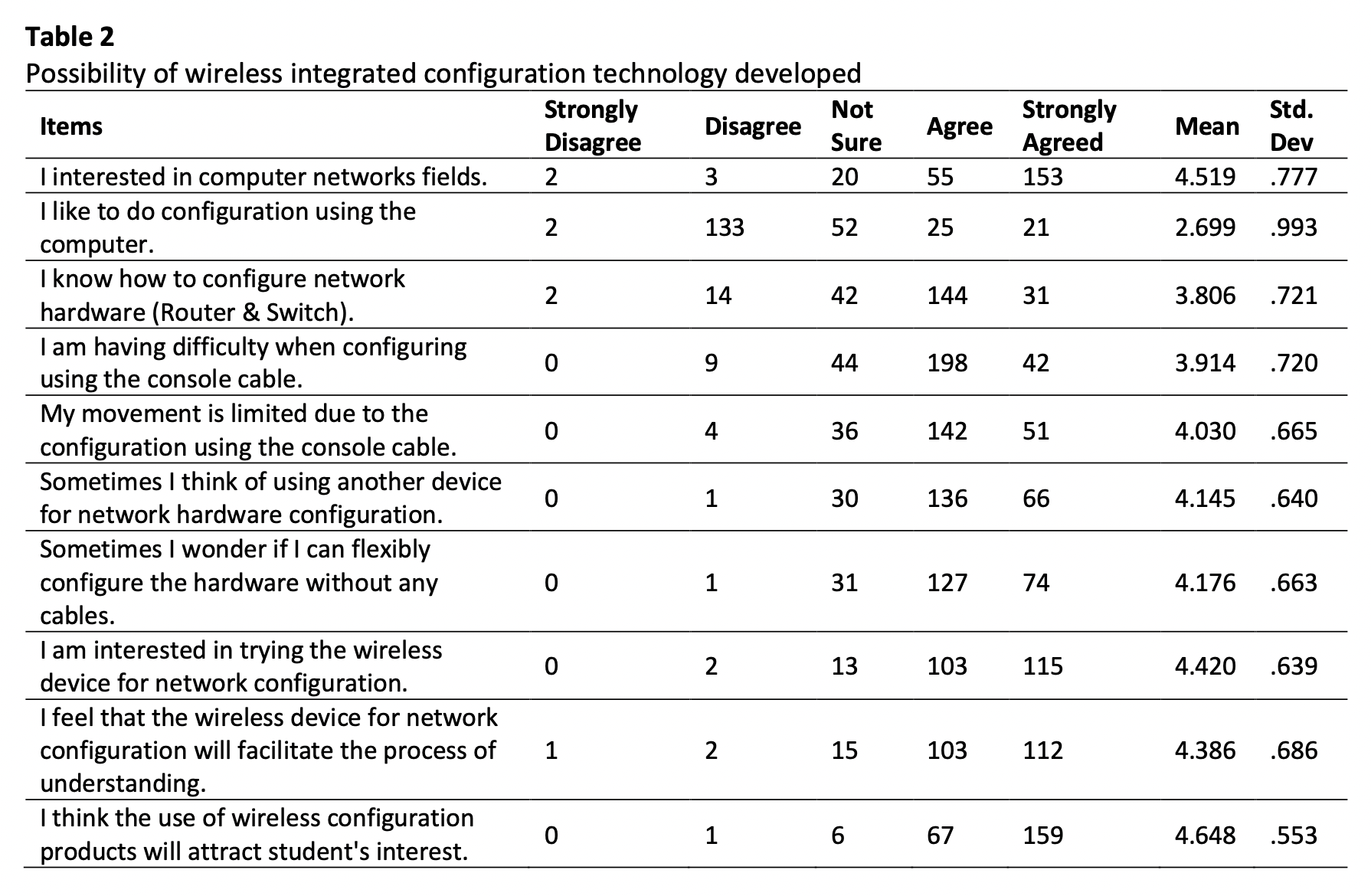Exploring the Potential of Wireless Integrated Configuration Technology as a Learning Tool
DOI:
https://doi.org/10.37934/araset.40.1.146153Keywords:
Wireless, Integrated, Raspberry Pi, Networking, ConfigurationAbstract
The objective of this study was to determine the feasibility of utilising wireless integrated configuration technology among students enrolled in networking courses. The proposed method entails using Raspberry Pi as the key hardware component to facilitate wireless configuration, hence facilitating seamless connectivity and communication across wireless devices. The networking solution facilitates the transport of data, exchange of resources, and cooperation in a wireless manner, eliminating the need for physical cables or wires. The research methodology for this study entails descriptive analysis in the form of a survey, which will have an impact on the quantitative findings. The results of the needs study found that over 90% of students agreed that the use of wireless configuration devices would improve understanding and interest them in doing network configuration. Based on the findings from interview sessions with experts, it has been demonstrated that the utilisation of wireless integrated configuration technology possesses the capacity to engender an enjoyable learning experience for students. This technology enables students to engage in configuration tasks wirelessly, utilising numerous devices concurrently. Additionally, experts believe that students can learn how to configure it technically as well as theoretically. The results of this study were successful in determining the level of potential for the development of wireless devices and their usage in networking courses.
Downloads




























